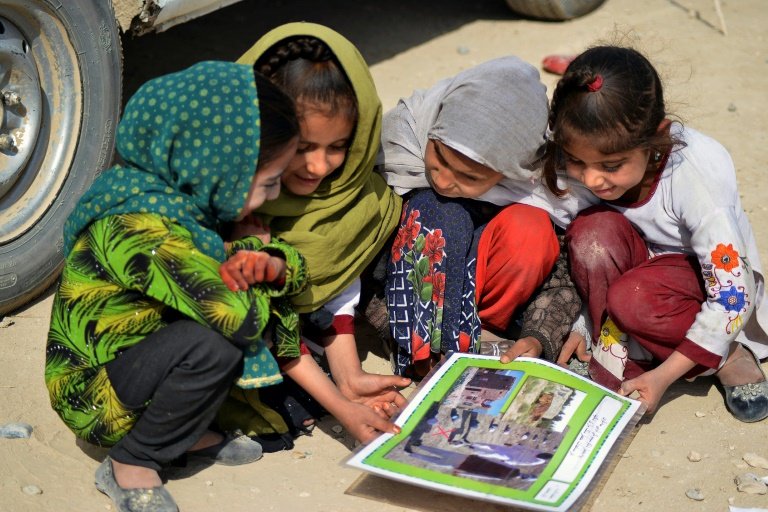21/11/2021 Afghanistan, Helmand
“If you ever come across anything suspicious like this item, please do not pick it up, contact your local law enforcement agency for assistance”
Weeks after the Taliban took over Afghanistan, families who fled the fighting in one southern village returned home to find something strange: the cricket ground had been circled in rocks painted red and white. White, it turned out, meant it was safe for children to play. But red signalled buried landmines and other ordnance — the explosive remnants of war that have killed or maimed tens of thousands of Afghans over the past four decades. The village of Nad-e-Ali in Helmand province became a front line in the final days of the war between the Taliban and Western-backed government forces in Kabul. It was besieged for two months until the Islamists took control of the country in mid-August. When its residents returned in September they found the village school riddled with gunfire, its roof blackened by smoke, and the children’s swings reduced to just a metal frame. They also found that the area had been “totally mined” in the fighting, according to Juma Khan, the local coordinator for the HALO Trust, the main mine-clearing NGO operating in Afghanistan. Newly laid mines and other booby traps were buried beneath doors of buildings and beside windows. “The rooms inside had mines and there were mines on the main street,” Khan told AFP during a visit to Nad-e-Ali this month. About 41,000 Afghan civilians have been killed or wounded by landmines and unexploded ordnance since 1988, according to the United Nations Mine Action Service (UNMAS).
Biography of a Bomb
Dear editors, Biography of a bomb is aimed at highlighting the danger caused by unexploded bombs. Moreover, the most important aspect is that we work completely non profit, raising awerness about this topic is what drives us. We apologize if we make use of pictures in yours articles, but we need them to put a context in how findings are done. We will (and we always do) cite source and author of the picture. We thank you for your comprehension.





